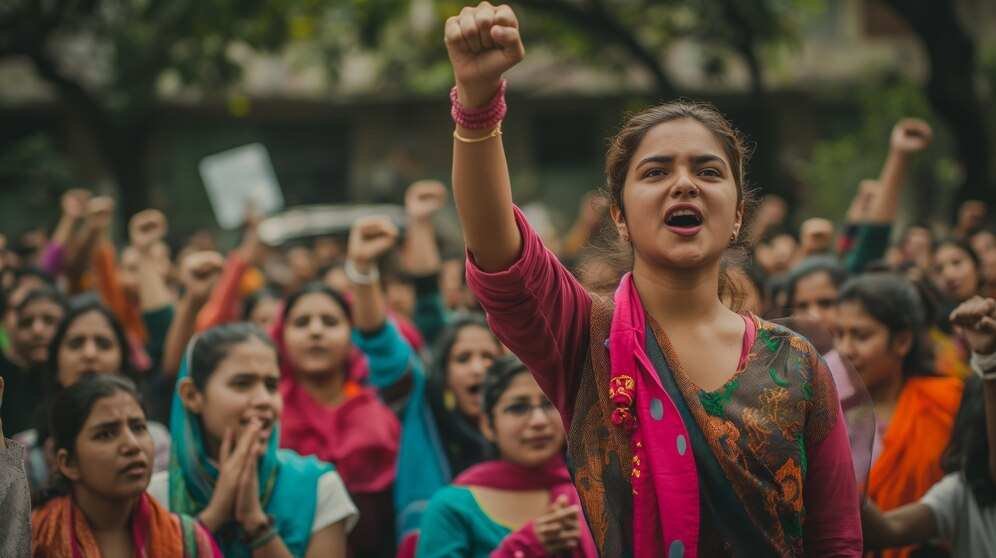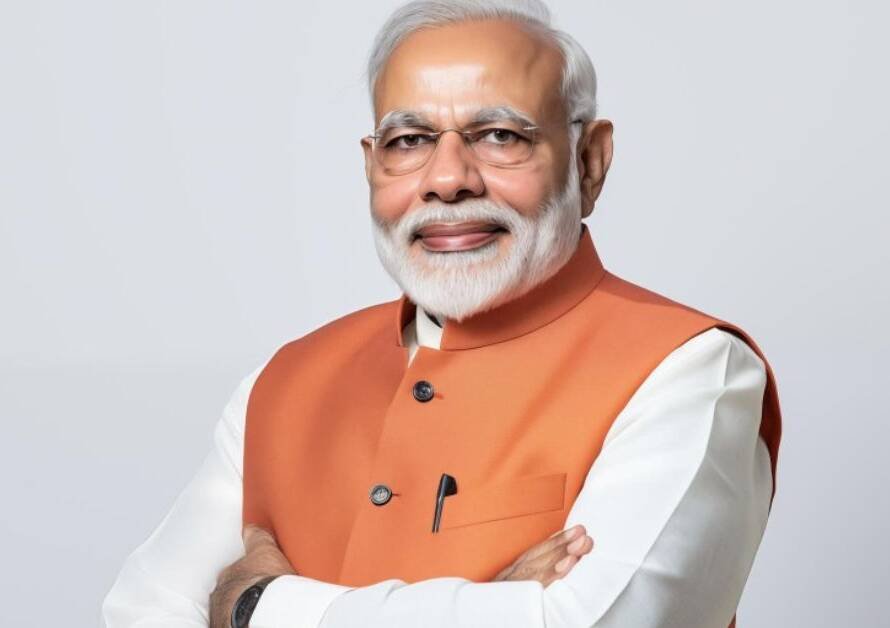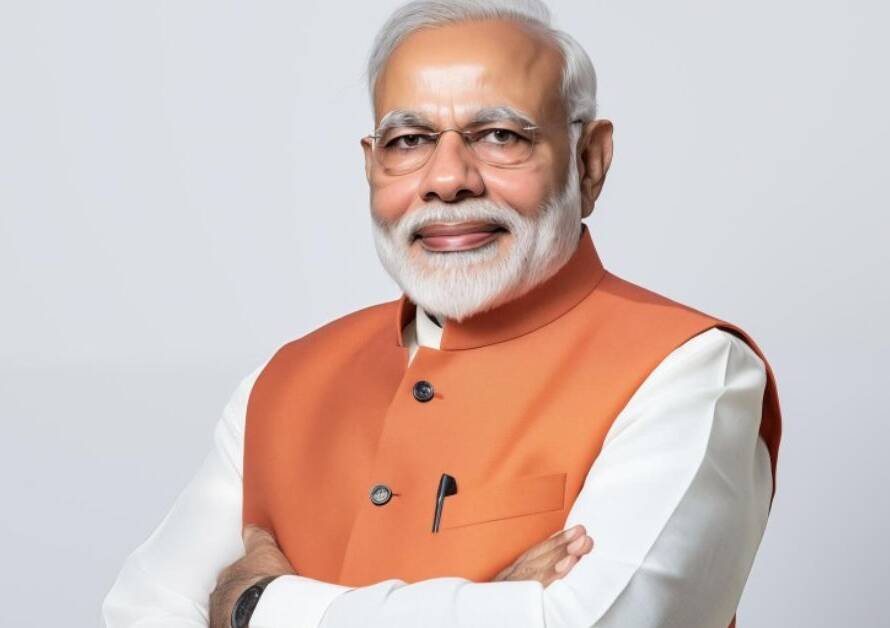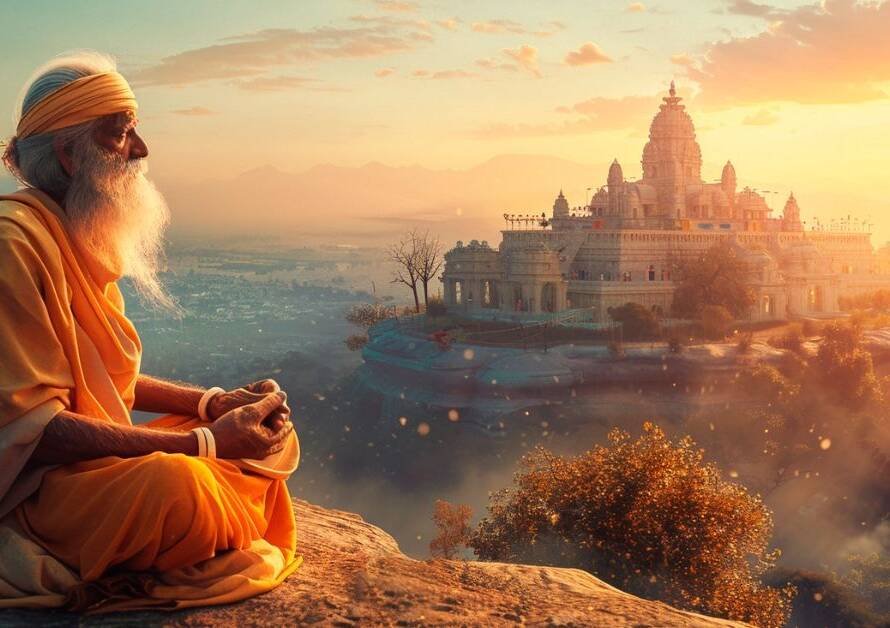For decades, Hindus have been systematically deceived and weakened by ideologies and terms like non-violence, secularism, communalism, and Gandhism, which were imposed on them to strip them of their rights and suppress their strength. These ideas, presented under the guise of morality and humanity, have historically been used as tools to weaken Hindus’ resolve, divide their communities, and render them defenseless. The time has come to recognize this deception and to reclaim our strength and honor.
The Weaponization of Non-Violence
The idea of non-violence, once embraced by Hinduism and then by Mahatma Gandhi, has been manipulated to disarm Hindus both mentally and physically. This ideology was first exploited during the rise of Buddhism, which, despite its noble intentions, planted a seed of pacifism that made Hindus vulnerable to invasions and atrocities. Over 1,500 years ago, under the influence of Buddhism’s concept of non-violence, Hindus were driven out of Afghanistan. This was not a mere coincidence, but a calculated erosion of the warrior spirit that once protected Hindu civilization.
Fast forward to the 20th century—Mahatma Gandhi’s version of non-violence became the rallying cry during India’s struggle for independence. However, this ideology, far from strengthening the nation, played a direct role in the eradication of Hindus from Pakistan and Bangladesh during partition. The very word “non-violence” has become a mechanism designed to eliminate Hindus by making them believe that courage and self-defense are somehow immoral.
In today’s India, non-violence continues to be wielded against Hindus as a moral imperative, shackling them in a mindset that equates any form of defense with aggression. This mindset has allowed external forces to grow stronger and more dangerous, while Hindus, clinging to a misunderstood notion of “ahimsa,” have been systematically pushed out of their lands, their history erased, and their future jeopardized.
Communalism and Secularism: The New Chains
After independence, new terms were introduced to further divide and control Hindus—communalism and secularism. These words, in theory, should promote equality and harmony, but in practice, they have been weaponized to suppress Hindu interests while elevating the agendas of other communities. Hindus, who historically accepted all faiths with open arms, have been labeled “communal” for defending their own rights, while the actual oppressors portray themselves as victims.
Secularism, too, was introduced as a guiding principle of the Indian state, but it has been selectively enforced to undermine Hindu values and institutions. Under the guise of secularism, Hindu temples are controlled by the government, while other religious institutions enjoy full autonomy. Hindu festivals are targeted under environmental or secular pretexts, while the festivals of other communities are celebrated without restrictions.
As Hindus, you have been taught to revere these concepts, but in reality, secularism and communalism have been crafted to weaken your collective identity, dividing you along caste, linguistic, and regional lines while shielding those who seek to erase your presence from your own country.
The Plight of Hindus in West Bengal, Pakistan, and Bangladesh
The persecution of Hindus has not been limited to Afghanistan in ancient times. More recently, it has occurred in Pakistan and Bangladesh, where Hindus have been systematically driven out, attacked, and annihilated. The horrors of Partition are a grim reminder of how pacifism and non-violence were used to justify the removal of Hindus from these regions.
In West Bengal, Hindus are currently facing a silent genocide. Be it through targeted killings, organized violence, or cultural erasure, the situation in West Bengal mirrors the tragedies that befell Hindus in Pakistan and Bangladesh. While those responsible for the violence play the victim card at every opportunity, Hindus have yet to understand that they, too, must claim their victimhood and assert their right to exist.
The manipulation continues as those who forced Hindus out of their ancestral lands, be it in Afghanistan, Pakistan, or Bangladesh, now claim to be victims themselves. A small incident like the trimming of a beard becomes a cause for outrage, while the systematic slaughter and displacement of Hindus barely garner attention. This hypocrisy has further emboldened the perpetrators of violence against Hindus.
The Glorious Past: Rekindling the Flame of Valor
To overcome this deception, Hindus must first reconnect with their glorious past. Vikramaditya, a mighty emperor whose influence once stretched from Kashi to Kaaba, represents the bravery and wisdom that Hindus need to reclaim. The Marathas, a community never considered a “military race,” liberated India from the Mughal Empire through sheer will and pride in their Hindu identity. Their small ponies and indomitable spirit allowed them to raise the saffron flag from Cuttack to Attock, showing that it is not military might alone that wins wars but the courage and unity of the people.
It is time to remember the victories of Chhatrapati Shivaji Maharaj, who defied the odds and built a Hindu kingdom in the face of Islamic invasions, and the valor of the Rajputs, who fought till their last breath to protect their dharma. Their strength was not in passive non-violence but in righteous defense of their culture, faith, and land.
The Harsh Truth: God’s Law and Survival of the Fittest
The reality of the world is harsh. Nature operates on the principle of survival of the fittest. In the sea, big fish eat small fish, and in the jungle, the violent animals prey on the non-violent ones. This is the law of God, and it applies to human societies as well. If Hindus remain passive and divided, they will continue to be preyed upon by those who seek to dominate them. The greatest law is the law of God, and God’s law is not passive but active, favoring the brave and the strong.
Hindus must abandon the false belief that non-violence is the ultimate virtue. Instead, they must embrace the truth that strength, courage, and unity are necessary for survival. By doing so, they will not only protect what remains of their culture but also ensure a future for their children in the land of their ancestors.
A Call to Action: Reclaim Your Strength and Unity
Hindus are not a weak minority—they are 1 billion strong. No other community in the world has such numbers in a single country. If Hindus unite, they can achieve feats that no one can even imagine. The power to reclaim India from the divisive forces of secularism, communalism, and non-violence lies within the Hindu community itself.
However, this requires courage. It requires Hindus to arm themselves—not just physically but mentally and spiritually. They must teach their children to be strong, to stand up for their rights, and to fight for their civilization. Every Hindu must be willing to protect their family, their community, and their nation.
Conclusion: Awaken for Your Survival, Honor, and Pride
The time has come to awaken from the slumber of passivity and reclaim the strength that once defined Hindu civilization. Recognize the deception that has been imposed upon you through non-violence, secularism, and communalism, and take pride in your heritage. The future of India, and indeed the future of Hinduism, depends on your ability to unite, arm yourselves with strength, and stand up for your rights.
Be brave, be united, and be proud of your heritage. Only then will you truly protect your civilization from those who seek to destroy it. Stand up for your survival, your honor, and your pride—this is your moment.
Here are some relevant examples and case studies to support the narrative of how Hindus have been systematically weakened through the ideas of nonviolence, secularism, and communalism:
- Partition of India (1947):
The Partition of India in 1947 is a powerful example of how the principle of nonviolence weakened the Hindu community and led to a massive loss of life and property. Under Mahatma Gandhi’s leadership, the Congress Party promoted the idea of nonviolence, even as the situation in the subcontinent became increasingly violent. In the name of maintaining peace, Hindus were encouraged to stay passive, resulting in the displacement of millions of Hindus from Pakistan and Bangladesh (then East Pakistan). Gandhi’s insistence on nonviolence meant that the Hindu community was largely unarmed and unprepared to defend itself during the violent riots that accompanied Partition. As a result, Hindus were disproportionately affected, with hundreds of thousands killed and millions forced to flee their homes.
Case Study: The displacement of Hindus from West Punjab and East Bengal, where they formed substantial minorities before 1947, is a stark example. In West Punjab, a Hindu and Sikh exodus occurred, while in East Bengal, many Hindus were either killed or forced to migrate to India. The wounds of Partition continue to affect the Hindu psyche, and their minority presence in Pakistan and Bangladesh has further diminished over the years.
- Bangladesh Liberation War (1971):
During the Bangladesh Liberation War of 1971, millions of Hindus were systematically targeted and massacred by the Pakistani Army. The Pakistani military, in collaboration with local Islamist militias, launched a brutal crackdown that disproportionately affected the Hindu population. The Hindus were viewed as enemies of the state simply because of their religion. While India intervened militarily to help liberate Bangladesh, the idea of nonviolence and secularism in India kept Hindus from organizing armed resistance or adequately preparing for self-defense.
Case Study: The Chuknagar Massacre of 1971 is one of the most infamous events, where thousands of Hindus were killed by the Pakistani military. Despite being the primary targets, Hindus remained largely unarmed and unprepared to defend themselves due to the influence of nonviolence and secularist rhetoric. Even today, the Hindu population in Bangladesh continues to decline due to continued persecution.
- Exodus of Kashmiri Pandits (1990):
The exodus of Kashmiri Pandits from the Kashmir Valley in 1990 is a glaring example of how Hindu minorities have been systematically oppressed in regions with rising Islamist forces. In this instance, the Pandits were targeted through a campaign of intimidation, violence, and murder by Islamic militants. Despite being the original inhabitants of Kashmir, the Hindus were forced to flee their homes en masse, leaving behind their property and cultural heritage.
Case Study: In 1990, radical Islamist groups, supported by external forces, issued open threats to Kashmiri Hindus to either convert, leave the valley, or face death. The failure of the state to protect its citizens, combined with a passive mindset influenced by years of secularist rhetoric, meant that the Kashmiri Hindus had no option but to flee. Today, Kashmiri Pandits remain refugees in their own country, living in exile for over three decades, with no real efforts to rehabilitate them back in Kashmir.
- Declining Hindu Population in Pakistan and Bangladesh:
In both Pakistan and Bangladesh, the Hindu population has drastically declined since Partition, largely due to systematic oppression, forced conversions, and violence. This is a direct result of the passive stance that has been adopted by the Indian state and its citizens over the years, influenced by secularism and nonviolence. Hindus in these countries are often targeted with impunity, their temples destroyed, and their women abducted.
Case Study: In Bangladesh, the Hindu population, which was about 30% at the time of Partition, has now dwindled to less than 8%. Similarly, in Pakistan, the Hindu population has dropped from around 15% in 1947 to less than 2% today. Numerous reports highlight the challenges faced by Hindus in both countries, including abduction and forced conversion of Hindu women, desecration of temples, and discriminatory laws. Yet, India’s secular stance has prevented any concerted effort to address the plight of these Hindus.
- West Bengal Post-election Violence (2021):
In May 2021, after the West Bengal state assembly elections, large-scale violence erupted against Hindus, primarily BJP supporters, by alleged TMC (Trinamool Congress) workers. Hindu homes were burned, women were raped, and many Hindus were forced to flee from their villages, particularly in areas dominated by minority communities. Despite the violence, there was a conspicuous silence from those who champion secularism and nonviolence, showing how selectively these principles are applied.
Case Study: The Nandigram and Cooch Behar districts saw intense violence, where Hindus were disproportionately affected. Many Hindus, particularly those who voted for the BJP, faced targeted attacks, and there were widespread reports of intimidation, looting, and displacement. The post-election violence against Hindus in West Bengal is a stark reminder of how political and ideological forces have used the rhetoric of secularism to mask atrocities against Hindus.
- Religious Conversions and Targeting of Hindus:
In recent years, there has been an increase in forced conversions of Hindus in India, particularly in tribal and backward areas. Evangelical organizations and radical Islamist groups have been actively converting vulnerable Hindu populations under the guise of humanitarian work or through coercion. The state’s commitment to secularism has often prevented it from taking decisive action against these conversion tactics, leaving Hindu communities defenseless.
Case Study: In states like Jharkhand, Odisha, and Chhattisgarh, large numbers of tribal Hindus have been converted to Christianity through well-funded missionary campaigns. Similarly, in states like Uttar Pradesh, Kerala, and West Bengal, reports of forced conversions to Islam through intimidation and financial incentives have surfaced. Despite these alarming trends, the Indian state has been reluctant to intervene, fearing accusations of communalism.
- Hindu Temples and Government Control:
Unlike other religious institutions in India, Hindu temples are subject to government control, particularly in southern states like Tamil Nadu, Kerala, and Karnataka. Revenues from these temples are often diverted for secular purposes, while Hindu communities themselves have limited control over their own religious institutions. This selective application of secularism has allowed the state to interfere in Hindu religious affairs while leaving other religious communities untouched.
Case Study: In Tamil Nadu, many famous Hindu temples, including the Tirupati Temple, are under government control, with temple funds being used for non-religious purposes. In contrast, mosques and churches are autonomous, managing their affairs without state interference. This has weakened Hindu religious institutions financially and administratively, while simultaneously depriving Hindus of their religious rights.
These examples and case studies illustrate how Hindus have been systematically weakened, marginalized, and displaced under the influence of ideologies such as nonviolence, secularism, and communalism. Recognizing these patterns is the first step toward reclaiming Hindu rights, culture, and identity.
Here are some important steps that the Hindu community should take for unity, protection, and safeguarding their rights:
- Reclaim Religious and Cultural Identity
Hindus should return to their religious and cultural values. This identity ensures that we preserve our history, traditions, and cultural heritage and pass them on to the next generation. For this, the protection of religious sites, temples, and festivals is essential. Additionally, the study of Hindu scriptures and education should be promoted so that the younger generation can deeply understand their religion.
Proposed Actions:
Organizing religious and cultural workshops.
Establishing religious educational institutions in local communities.
Advocating for the autonomy of temples and movements to free them from government control.
- Social and Political Unity
One of the biggest challenges Hindus face today is their internal divisions. Divided by caste, region, and ideology, we cannot protect our interests. Therefore, this is the time to come together on a common platform, forgetting all differences. The purpose of this unity is to create a strong Hindu voice, both politically and socially, that can protect the rights and dignity of the community within and outside India.
Proposed Actions:
Facilitating dialogue and coordination among all Hindu organizations.
Supporting leaders who advocate for Hindu interests.
Collective efforts to eliminate caste discrimination and internal conflicts.
- Self-Defense and Community Security
As the Hindu community faces growing challenges, it is essential to prepare for self-defense. Self-defense not only means physical protection but also mental and ideological security. We must organize community training, security plans, and self-defense measures to ensure we are prepared for any emergency situation and can respond in an organized manner.
Proposed Actions:
Organizing local self-defense training camps.
Forming community security committees to ensure the safety of the community.
Raising awareness of legal rights and protection measures.
- Anti-Conversion Movement
One of the biggest threats facing the Hindu community is forced or induced conversions, targeting weaker sections of society. Over time, these conversions weaken our community. Effective measures need to be implemented to combat this, both legally and socially, and work to stop conversions.
Proposed Actions:
Strongly advocating for anti-conversion laws and demanding strict enforcement.
Running awareness campaigns in areas affected by conversions.
Collaborating with Hindu organizations to support economically and socially weaker sections.
- Education and Awareness Campaign
A powerful campaign is needed to raise awareness about the injustices and discrimination faced by the Hindu community. Mainstream media often underplays these issues, so it is essential to use alternative media and social platforms to bring the truth to light. The goal of education is to understand our reality and work towards changing it.
Proposed Actions:
Utilizing social media, blogs, and YouTube to highlight our issues.
Developing curricula focused on Hindu history and culture.
Running awareness campaigns against Hindu persecution at national and international levels.
- Political Awareness and Participation
It is crucial to strengthen the participation of the Hindu community in politics. Ensuring that Hindus recognize their political interests and vote collectively will bring stability to India’s political landscape. Political awareness and participation will ensure that Hindu interests are represented.
Proposed Actions:
Organizing voting strategies to vote collectively in elections.
Supporting political parties and candidates based on their stance on Hindu issues.
Promoting participation at the local and national political levels.
- Media and Legal Rights Awareness
The representation of the Hindu community in the media and legal sectors is weak. As a result, anti-Hindu propaganda often spreads unchecked. Strengthening our position in the media and raising awareness of legal rights is essential so that Hindus can defend their rights and confront injustices against them.
Proposed Actions:
Supporting and creating media channels and news platforms that protect Hindu interests.
Forming legal advisory groups and organizations to assist the Hindu community in legal matters.
Creating pressure groups to ensure balanced and fair Hindu representation in the media.
Conclusion:
This is the time for the Hindu community to unite and organize to protect their rights. Ideologies like non-violence, secularism, and communalism have only weakened us. We must be determined to protect our culture, religion, and identity. Unless we become united, aware, and empowered, we cannot secure our future.Here are some important steps that the Hindu community should take for unity, protection, and safeguarding their rights:
- Reclaim Religious and Cultural Identity
Hindus should return to their religious and cultural values. This identity ensures that we preserve our history, traditions, and cultural heritage and pass them on to the next generation. For this, the protection of religious sites, temples, and festivals is essential. Additionally, the study of Hindu scriptures and education should be promoted so that the younger generation can deeply understand their religion.
Proposed Actions:
Organizing religious and cultural workshops.
Establishing religious educational institutions in local communities.
Advocating for the autonomy of temples and movements to free them from government control.
- Social and Political Unity
One of the biggest challenges Hindus face today is their internal divisions. Divided by caste, region, and ideology, we cannot protect our interests. Therefore, this is the time to come together on a common platform, forgetting all differences. The purpose of this unity is to create a strong Hindu voice, both politically and socially, that can protect the rights and dignity of the community within and outside India.
Proposed Actions:
Facilitating dialogue and coordination among all Hindu organizations.
Supporting leaders who advocate for Hindu interests.
Collective efforts to eliminate caste discrimination and internal conflicts.
- Self-Defense and Community Security
As the Hindu community faces growing challenges, it is essential to prepare for self-defense. Self-defense not only means physical protection but also mental and ideological security. We must organize community training, security plans, and self-defense measures to ensure we are prepared for any emergency situation and can respond in an organized manner.
Proposed Actions:
Organizing local self-defense training camps.
Forming community security committees to ensure the safety of the community.
Raising awareness of legal rights and protection measures.
- Anti-Conversion Movement
One of the biggest threats facing the Hindu community is forced or induced conversions, targeting weaker sections of society. Over time, these conversions weaken our community. Effective measures need to be implemented to combat this, both legally and socially, and work to stop conversions.
Proposed Actions:
Strongly advocating for anti-conversion laws and demanding strict enforcement.
Running awareness campaigns in areas affected by conversions.
Collaborating with Hindu organizations to support economically and socially weaker sections.
- Education and Awareness Campaign
A powerful campaign is needed to raise awareness about the injustices and discrimination faced by the Hindu community. Mainstream media often underplays these issues, so it is essential to use alternative media and social platforms to bring the truth to light. The goal of education is to understand our reality and work towards changing it.
Proposed Actions:
Utilizing social media, blogs, and YouTube to highlight our issues.
Developing curricula focused on Hindu history and culture.
Running awareness campaigns against Hindu persecution at national and international levels.
- Political Awareness and Participation
It is crucial to strengthen the participation of the Hindu community in politics. Ensuring that Hindus recognize their political interests and vote collectively will bring stability to India’s political landscape. Political awareness and participation will ensure that Hindu interests are represented.
Proposed Actions:
Organizing voting strategies to vote collectively in elections.
Supporting political parties and candidates based on their stance on Hindu issues.
Promoting participation at the local and national political levels.
- Media and Legal Rights Awareness
The representation of the Hindu community in the media and legal sectors is weak. As a result, anti-Hindu propaganda often spreads unchecked. Strengthening our position in the media and raising awareness of legal rights is essential so that Hindus can defend their rights and confront injustices against them.
Proposed Actions:
Supporting and creating media channels and news platforms that protect Hindu interests.
Forming legal advisory groups and organizations to assist the Hindu community in legal matters.
Creating pressure groups to ensure balanced and fair Hindu representation in the media.
Conclusion:
This is the time for the Hindu community to unite and organize to protect their rights. Ideologies like non-violence, secularism, and communalism have only weakened us. We must be determined to protect our culture, religion, and identity. Unless we become united, aware, and empowered, we cannot secure our future.







